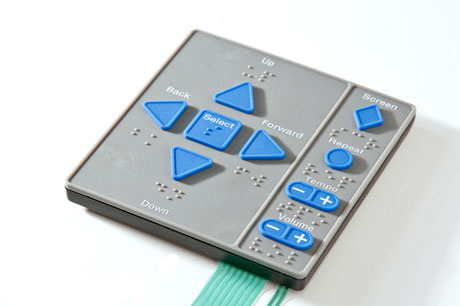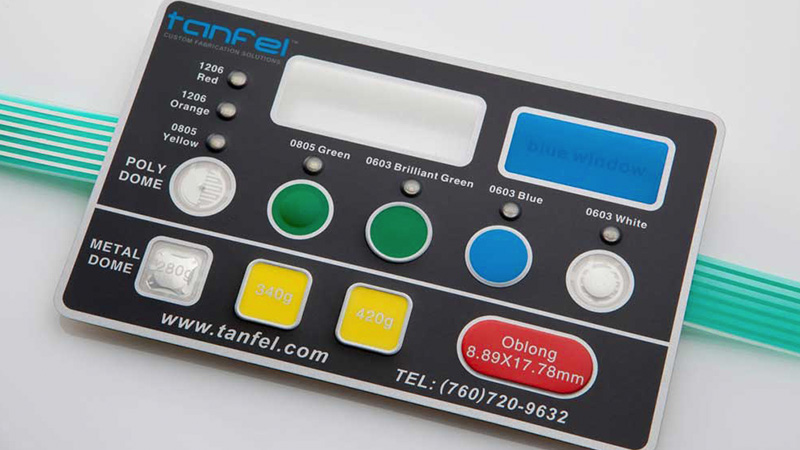Membrane Layer Changes Explained: A Comprehensive Guide to Their Advantages
Membrane switches stand for a sophisticated and flexible solution for developing interface across a range of markets. Their multilayered layout not only guarantees functionality through basic pressure yet additionally offers substantial benefits, such as resilience and personalization. As industries increasingly look for trustworthy and effective control interfaces, comprehending the details advantages and applications of membrane layer switches comes to be important. However, the details of their layout and application existing unique difficulties that quality better examination. What variables should be taken into consideration to totally take advantage of their capacity in modern applications?
What Are Membrane Layer Buttons?

When pressure is used to the membrane switch, the layers make call, finishing an electrical circuit. This simple system allows for a variety of applications, from customer electronic devices to commercial machinery. Membrane buttons are frequently developed to be water-proof and immune to dust and impurities, making them ideal for environments where resilience is necessary.
Furthermore, the versatility of the materials used in membrane switches assists in innovative designs that can satisfy numerous forms and measurements. This adaptability contributes to their appeal in diverse areas, consisting of clinical tools, vehicle controls, and home appliances. Overall, membrane layer switches over stand for a vital component in contemporary interface modern technology, connecting the space between users and electronic systems.
Key Benefits of Membrane Layer Switches
Amongst the myriad of customer interface options readily available, membrane layer switches stand apart for their unique combination of advantages. One of the primary benefits is their portable and lightweight design, which enables assimilation into a large range of devices without including significant mass. This is especially helpful in applications where area is limited.
Furthermore, membrane changes deal longevity and resistance to environmental variables. They are typically built with products that can stand up to dampness, dust, and different chemicals, making them appropriate for severe conditions. This durability adds to a longer lifespan compared to traditional mechanical switches.
An additional substantial advantage is the versatility in modification. Membrane buttons can be published with various graphics, shades, and appearances, allowing for tailored layouts that fulfill specific branding or practical requirements. This adaptability expands to the variety of layers and circuit alternatives, offering designers with multiple arrangements.
In addition, the responsive feedback provided by some membrane layer switches over boosts individual experience, making them more instinctive to operate. The simplicity of cleaning and maintenance better strengthens membrane buttons as a sensible selection in both customer and commercial applications. On the whole, these essential advantages make them a preferred option for many designers and manufacturers
Applications in Numerous Industries
Just how do membrane layer switches discover their area across varied markets? Their adaptability and performance make them important parts in sectors ranging from healthcare to consumer electronics. In medical tools, membrane layer switches are used for their convenience of cleaning and resistance to contamination, guaranteeing health in settings where sterility is essential.
In the consumer electronics sector, these buttons offer smooth, user-friendly interfaces that enhance product aesthetics while maintaining longevity versus wear and tear. Automotive applications take advantage of membrane layer switches too, where they are utilized in dashboards and control panels, offering trusted performance in challenging conditions.
In addition, industrial machinery utilizes membrane buttons for control board because of their toughness, ability to stand up to extreme atmospheres, and customizable layouts that accommodate particular functional requirements. The food sector leverages membrane layer switches for their simplicity of usage and resistance to spills, guaranteeing operational efficiency in busy settings.
Eventually, the versatility of membrane switches across these varied applications emphasizes their vital role in modern technology, boosting user communication while meeting industry-specific needs. Their continued development assures more integration right into emerging fields and ingenious items.
Style and Personalization Choices
The layout and modification options offered for membrane buttons are crucial for tailoring user interfaces to satisfy certain customer demands and visual choices. These switches can be designed in different forms, sizes, and formats, enabling seamless combination right into diverse applications. The adaptability in layout indicates that suppliers can create one-of-a-kind user interfaces that improve usability and maintain brand identification.
Personalized graphics, shades, and appearances can be related to the surface of the membrane switch, providing a possibility for branding and individual engagement. Furthermore, backlighting alternatives, such as LED lighting, can be included to improve visibility in low-light problems, thus enhancing functionality.
Useful components can also be personalized, consisting of tactile feedback and actuation force, which can be adapted to fit various individual communications. The choice of products, such as polyester or polycarbonate, permits variants in toughness and environmental resistance, catering to the details needs of various markets.
Inevitably, the considerable design and modification capacities of membrane layer switches allow business to produce straightforward and aesthetically enticing interfaces, ensuring that their items satisfy both useful and aesthetic demands effectively. Membrane Switches.
Considerations for Application
Implementing membrane changes needs cautious consideration of various elements to make certain optimum performance and customer experience. Among the primary factors to consider is the designated application setting. Elements such as direct exposure to wetness, severe temperatures, and chemical materials can significantly affect the switch's efficiency and durability. Picking products that endure these problems is important.

Another important look at more info aspect is the switch's design and design. Guaranteeing that the responsive feedback and actuation force straighten with individual expectations boosts usability. Conducting customer testing can supply important understandings into our website the ideal layout.
Additionally, compatibility with electronic components need to be examined. The button's wiring need to straighten with the general system architecture, ensuring trusted signal transmission and lessening disturbance.
Additionally, production approaches and expenses need to be assessed. The selection in between custom styles and standard models can lead and influence both budget time.
Finally, consider upkeep and repair service. Membrane layer buttons might need specific cleansing and treatment procedures to maintain their appearance and functionality with time. By addressing these factors to consider, organizations can carry out membrane switches that click now fulfill their operational requirements while offering a favorable customer experience.

Verdict
To conclude, membrane layer switches over represent a flexible and resilient control user interface ideal for a broad range of applications throughout numerous sectors. Their compact layout, resistance to environmental variables, and personalized functions improve individual experience while meeting details branding requirements. As modern technology proceeds to evolve, the significance of membrane layer buttons in contemporary devices continues to be significant, offering both functionality and visual allure. Future improvements will likely additionally expand their applications and efficiency in different atmospheres.
Membrane layer switches over represent a versatile and innovative service for developing user interfaces throughout a range of fields.Understanding the basic parts of contemporary digital user interfaces, membrane layer buttons are a type of individual interface device that consist of flexible, thin layers of material. On the whole, membrane layer changes represent an important aspect in contemporary user interface modern technology, connecting the gap between individuals and digital systems.
Amongst the myriad of individual interface choices available, membrane changes stand out for their unique combination of advantages.The style and customization alternatives offered for membrane layer buttons are essential for tailoring user interfaces to satisfy certain user needs and aesthetic preferences.